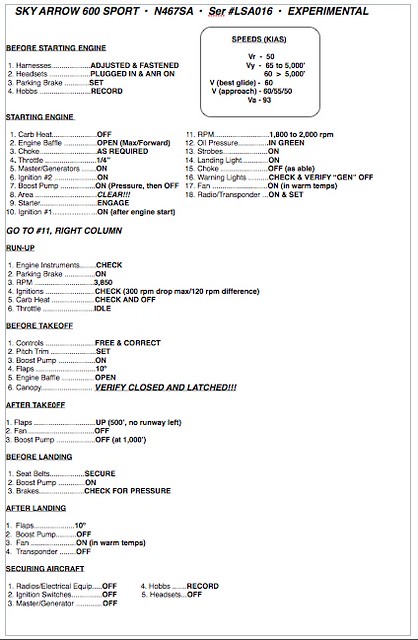MAKG1
Touchdown! Greaser!
- Joined
- Jun 19, 2012
- Messages
- 13,411
- Location
- California central coast
- Display Name
Display name:
MAKG
Pretakeoff section of my 172 checklist:
Doors - closed
Seat belts - on
Controls - free/correct
Instruments/radios - set
Fuel selector - both
Mixture - best power
Carb heat - off
Mags - checked
Gauges - green
I know that RPM goes to 1700 for the runup. I know that the passengers receive a briefing. I know to stand on the brakes and back it up with the parking brake during the runup. I know to set the vents or cabin heat as needed. Simple plane, simple checklist.
Mixture to best power at sea level airports? Really? Unless you're the one guy who operates out of Bonny Doon and it's summer, something's not right.
There is also more to a run up than a mag check. It sucks when you discover your carb heat doesn't work on a marine-layer day.
Many of these checklists can be simplified a lot, but this one isn't right.
Despite being lengthy, the factory ones are not complete. Cessna singles don't seem to extend the flaps during preflight, and I've found some binding and track damage before. And the 172 checklist I went over yesterday never checked the lights or pitot heat. Sure it was day VFR, but the beacon is still required and the list is not for day VFR only.
My own two page (half size, to fit on a kneeboard) checklist has all this, as does my preflight flow.
Last edited:





